75th Anniversary of VJ Day Liverpool 2020, Connections and Reflections.
Posted on: 14 August 2020 by Lorna Sergeant Collections and Exhibitions Officer in 2020
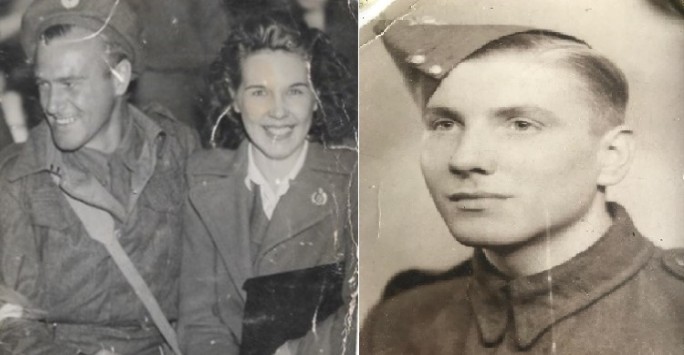
This Saturday the 15th of August is 75th anniversary of the Victory Over Japan Day, VJ Day, marking both the surrender of Japan and the end of the Second World War. The surrender effectively ended the war and allowed British soldiers, who had been fighting in Burma and those held captive across southeast Asia and the Far East, to return home. At least 20,000 of these men (as well as hundreds of civilian internees) disembarked in Liverpool between 8 October and the end of December that year. The remainder either returned via Southampton or, in the case of a few, flew back and were the first to arrive home during September.
This week’s guest blog focuses on two Liverpudlians who returned home. CQMS Maurice Charles Green whose artwork is featured in the Secret Art of Survival exhibition written by Meg Parkes and a personal story by our colleague John Davies whose father William Dickinson Davies was liberated from a coal mine in Japan.
Over to Meg Parkes...
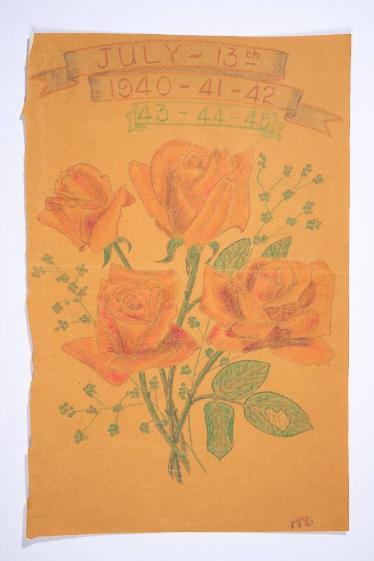
Anniversary Card
By CQMS Maurice Charles Green, 287 Field Coy, RE
© the Green Family
This anniversary ‘card’ was drawn on a small piece of coloured paper, by Liverpudlian Quartermaster Sergeant Maurice Green, to remind him of his beautiful young wife Doris (seen together in this photograph taken on the Princes Landing Stage, Liverpool after he had disembarked from the SS Tegelberg on 11 October 1945).
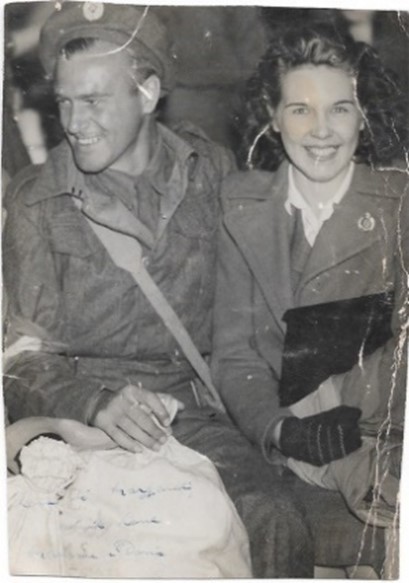
Maurice Green and his wife Doris
Born in 1916, Green grew up in the Waterloo district of Liverpool. In 1930, aged just 14, he joined the army as a ‘boy soldier’. Four years later he enlisted as a Sapper in the Royal Engineers and by 1941, now married to Doris Rose, he was promoted to Company Quartermaster Sergeant, 287th Field Company RE.
His younger brother John joined the army and also served in the 287th Field Company which was eventually to be drafted overseas as part of the 18th Division. This force arrived in Singapore in January 1942 and the brothers were among those taken prisoner at the Fall of Singapore.
Maurice kept with him throughout captivity the small card he’d made as a Far East prisoner of war (FEPOW) in camps in Singapore and Thailand, marking off the years as each 13th July anniversary passed.
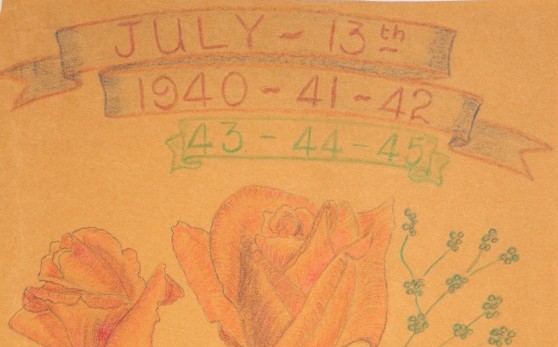
Detail marking off the years
This is a simple yet touching reminder of a young soldier’s longing to return to hearth and home and the love of his life.
Green also did the pencil sketch below showing the view from his hut window in the early days of captivity in Changi POW camp in Singapore.
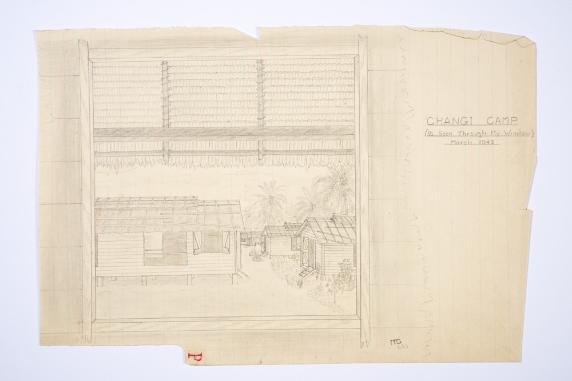
As seen from my window, Changi POW camp, Singapore March 1942
Changi POW camp encompassed a large wired-off area in the southeast of Singapore island. Initially it held around 60,000 Allied POW, including over 32,000 British servicemen. Gradually numbers in camp decreased as drafts of men were sent to other parts of southeast Asia and the Far East to work as slave labourers for the Japanese along with tens of thousands of local indigenous peoples.
Maurice’s younger brother John was sent to work in the copper mines of Taiwan (then known as Formosa) before ending up in a camp in Japan. By far the majority of the British POW in Changi, Green included, were transported by train from Singapore to Thailand during the first year and a half of captivity. There they were forced to work on the construction of new rail link between Ban Pong in Thailand and Moulmein in Burma (now Myanmar), known as the Thai-Burma railway. Most of the slave labour force were sick and malnourished and the death toll was huge.
Both Maurice and John survived the war, as did Doris’ anniversary card. Following extended leave Maurice returned to his unit in 1946.
Extracted from Captive Artists, the unseen art of British Far East prisoners of war, the book accompanying the “Secret Art of Survival” (2019-2020) exhibition at the Victoria Gallery & Museum. Take a 360 degree tour or the exhibition at your own pace, and in any order you choose here.
For more information www.captivememories.org.uk
John Davies (Visitor Service Team VG&M) recollects…
Far Away From Home
In 1940 at the age of twenty my dad, William Dickinson Davies, was conscripted into the army and left home.
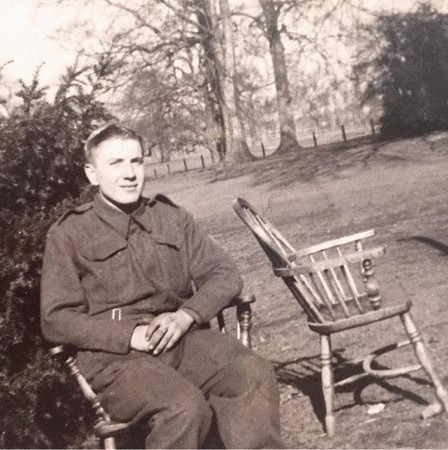
A young William Dickinson Davies
On the 15th February 1942 Singapore surrendered and he became a prisoner of the Japanese. He was reported as missing in action and his family only discovered that he was a prisoner in July 1944.
History shows the war ended on the 15th August 1945, when Japan surrendered. For him it ended when he was liberated form a coal mine in Japan on the 2nd of September 1945. He had been far away from home for over three years.
Weighing just 7 stone 3 pounds he was taken to the USA and gradually, over a number of weeks, travelled to Canada, during which time he had recuperated and was fit to fly home to England.
When he eventually returned home, he found his wife, who he had married just prior to leaving, had found a new love. However, his parents and siblings had all survived.
Not long afterwards he met my mum, and lived a long life.
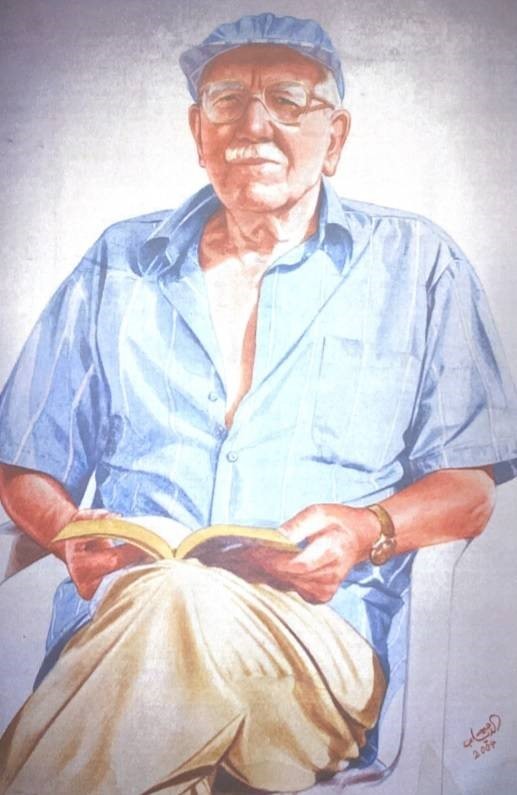
William Dickinson Davies in later life
He died peacefully in his sleep at home at the age of 86. On the 64th anniversary of his surrender.
75 years on we are remembering the contribution of all British, Commonwealth and Allied Forces, without whom victory, the freedoms and way of life we enjoy today would have not been possible.
Keywords: VJ Day 75, Captive Memories, Secret Art of Survival, FEPOW.